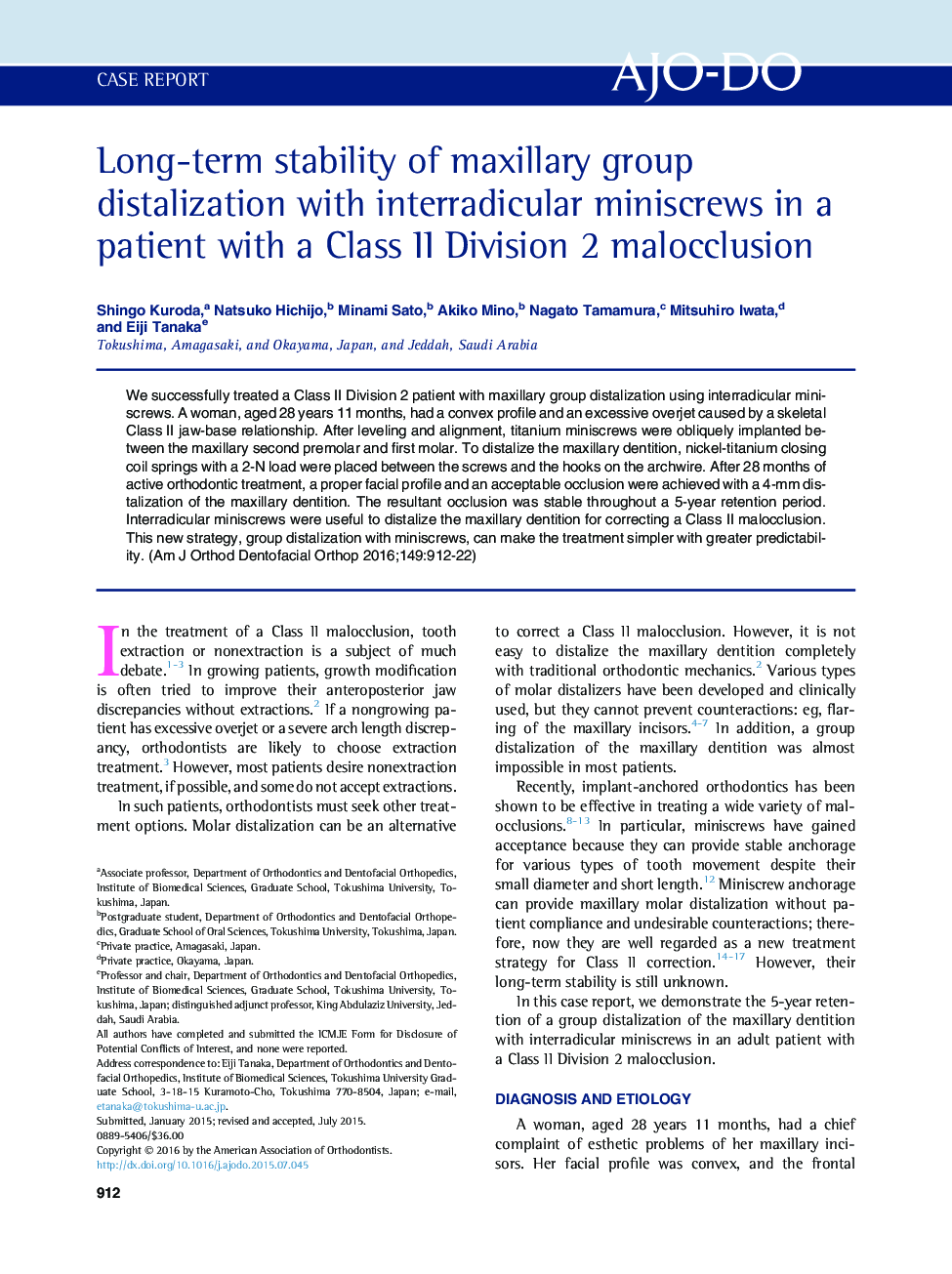| کد مقاله | کد نشریه | سال انتشار | مقاله انگلیسی | نسخه تمام متن |
|---|---|---|---|---|
| 3115577 | 1582675 | 2016 | 11 صفحه PDF | دانلود رایگان |
• Maxillary group distalization of 4 mm can be achieved with interradicular miniscrews.
• The occlusion was stable after 5 years of retention despite the large amount of molar distalization.
• Extraction spaces of the mandibular first molars were completely closed with molar mesialization.
We successfully treated a Class II Division 2 patient with maxillary group distalization using interradicular miniscrews. A woman, aged 28 years 11 months, had a convex profile and an excessive overjet caused by a skeletal Class II jaw-base relationship. After leveling and alignment, titanium miniscrews were obliquely implanted between the maxillary second premolar and first molar. To distalize the maxillary dentition, nickel-titanium closing coil springs with a 2-N load were placed between the screws and the hooks on the archwire. After 28 months of active orthodontic treatment, a proper facial profile and an acceptable occlusion were achieved with a 4-mm distalization of the maxillary dentition. The resultant occlusion was stable throughout a 5-year retention period. Interradicular miniscrews were useful to distalize the maxillary dentition for correcting a Class II malocclusion. This new strategy, group distalization with miniscrews, can make the treatment simpler with greater predictability.
Journal: American Journal of Orthodontics and Dentofacial Orthopedics - Volume 149, Issue 6, June 2016, Pages 912–922
